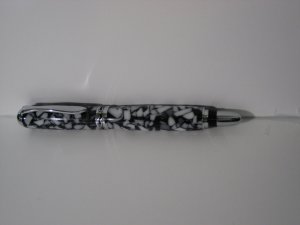CREID
Member
I have heard of this happening, but it hasn't happened to me until now. I turned an acrylic blank and while I was sanding, I noticed a hole. Now I am not the greatest turner, but I don't think I could screw up so bad that there is an approx. 1/32 hole right in the middle of the blank. So I'm blaming the manufacturer, Darn you for being Human. I don't even remember where it was from. You see I had to stop turning a few years ago and although I order new stuff to turn now that I am back, I am also working through a lot of old stuff too, I don't even know some times what is old and what is new (look for a bunch of bad photos of cigar pens coming, I had someone give me a bunch of them about 6 or 7 years ago). Anyway, I am going to put a little CA in my little hole right in the middle of my blank. I am wondering if that fix would be permanent or if there is a possibility that it may pop out in the future?
Thanx
Curt
Thanx
Curt

